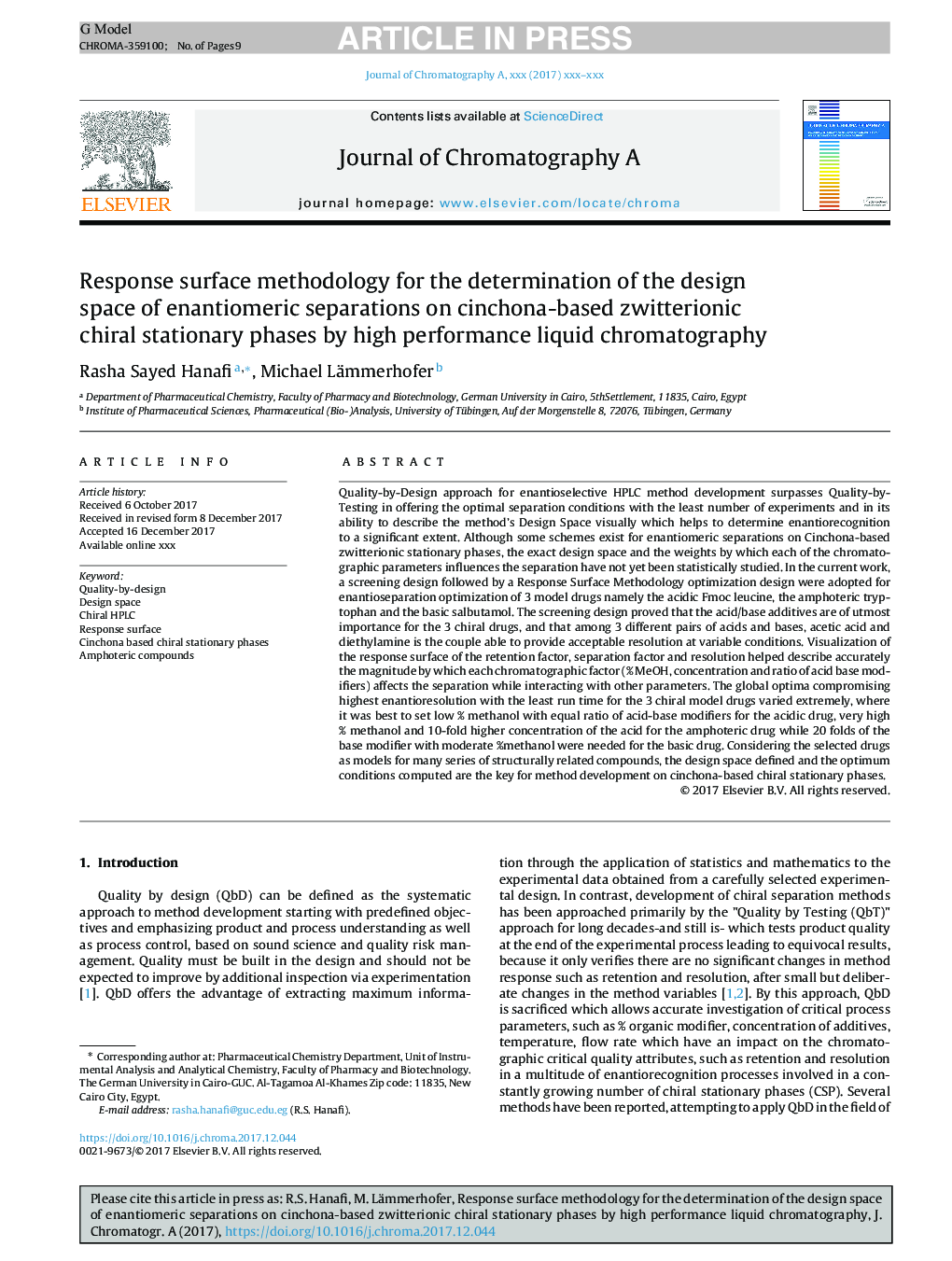| کد مقاله | کد نشریه | سال انتشار | مقاله انگلیسی | نسخه تمام متن |
|---|---|---|---|---|
| 7609004 | 1493392 | 2018 | 9 صفحه PDF | دانلود رایگان |
عنوان انگلیسی مقاله ISI
Response surface methodology for the determination of the design space of enantiomeric separations on cinchona-based zwitterionic chiral stationary phases by high performance liquid chromatography
ترجمه فارسی عنوان
روش سطح پاسخ برای تعیین فضای طراحی جداسازی انانتیومر بر روی فازهای غیر مجاز کریستال سینچونا مبتنی بر کروماتوگرافی مایع با کارایی بالا
دانلود مقاله + سفارش ترجمه
دانلود مقاله ISI انگلیسی
رایگان برای ایرانیان
کلمات کلیدی
موضوعات مرتبط
مهندسی و علوم پایه
شیمی
شیمی آنالیزی یا شیمی تجزیه
چکیده انگلیسی
Quality-by-Design approach for enantioselective HPLC method development surpasses Quality-by-Testing in offering the optimal separation conditions with the least number of experiments and in its ability to describe the method's Design Space visually which helps to determine enantiorecognition to a significant extent. Although some schemes exist for enantiomeric separations on Cinchona-based zwitterionic stationary phases, the exact design space and the weights by which each of the chromatographic parameters influences the separation have not yet been statistically studied. In the current work, a screening design followed by a Response Surface Methodology optimization design were adopted for enantioseparation optimization of 3 model drugs namely the acidic Fmoc leucine, the amphoteric tryptophan and the basic salbutamol. The screening design proved that the acid/base additives are of utmost importance for the 3 chiral drugs, and that among 3 different pairs of acids and bases, acetic acid and diethylamine is the couple able to provide acceptable resolution at variable conditions. Visualization of the response surface of the retention factor, separation factor and resolution helped describe accurately the magnitude by which each chromatographic factor (% MeOH, concentration and ratio of acid base modifiers) affects the separation while interacting with other parameters. The global optima compromising highest enantioresolution with the least run time for the 3 chiral model drugs varied extremely, where it was best to set low % methanol with equal ratio of acid-base modifiers for the acidic drug, very high % methanol and 10-fold higher concentration of the acid for the amphoteric drug while 20 folds of the base modifier with moderate %methanol were needed for the basic drug. Considering the selected drugs as models for many series of structurally related compounds, the design space defined and the optimum conditions computed are the key for method development on cinchona-based chiral stationary phases.
ناشر
Database: Elsevier - ScienceDirect (ساینس دایرکت)
Journal: Journal of Chromatography A - Volume 1534, 26 January 2018, Pages 55-63
Journal: Journal of Chromatography A - Volume 1534, 26 January 2018, Pages 55-63
نویسندگان
Rasha Sayed Hanafi, Michael Lämmerhofer,
